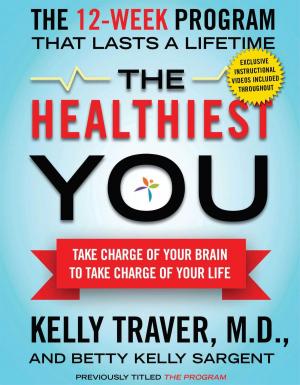Healthcare Insights: Better Care, Better Business
Business & Finance, Management & Leadership, Decision Making & Problem Solving, Nonfiction, Health & Well Being, Health, Healthy Living| Author: | Dr. Harold Goldmeier | ISBN: | 9781311350961 |
| Publisher: | Dr. Harold Goldmeier | Publication: | February 15, 2016 |
| Imprint: | Smashwords Edition | Language: | English |
| Author: | Dr. Harold Goldmeier |
| ISBN: | 9781311350961 |
| Publisher: | Dr. Harold Goldmeier |
| Publication: | February 15, 2016 |
| Imprint: | Smashwords Edition |
| Language: | English |
People are living longer, healthier, and safer than any time in human history. This book offers insights about health and medical care technology unfolding at the fastest speed in human history, and their limitations in reaching patients due to marketplace economics, bureaucracies, insufficient training, and government rules and regulations. The thoughts here are more focused about how to make healthcare and medical care delivery systems more efficient and effective now rather than theorizing about the futurist world.
Advanced nations deliver health and medical care better than developing countries, but there too governments are ginning up on issues like vaccinations, water safety, maternal and child healthcare, and care for disabled children. Doctors and healthcare workers from developing countries are training in hospitals, medical schools, and science departments throughout advanced nations.
Concomitantly, doctors and healthcare workers work in developing countries on a regular basis not just in crises. They introduce advanced techniques and procedures, new technologies, and cultural perspectives.
Advances in treating HIV and Aids are overcoming cultural and religious based prejudices. With the leadership of the World Health Organization and other NGOs, governments are doing better to stem Ebola and other diseases with early intervention.
Obesity for instance is recognized a major health threat throughout the Middle East and southern Europe where fast foods and processed ingredients are replacing fresh foods and low fat healthy diets. Governments are launching education programs and healthcare incentives. The millennial generations in advanced countries are returning to healthier eating and exercise after a century of disquieting habits.
Public health workers are given short shrift for their contributions in an age of glitz science and high technology. Their passion, intelligence, and curiosity are critical resources in the battle for better healthcare.
Futurism began flourishing as a movement in the 1900’s based in the art world in response to rapidly unfolding new technologies. The old world ways were steeped in a tenacious web of unproven science and philosophy.
New inventions emphasizing speed and technology appeared so rapidly 100 years ago that inventors, academics and philosophers were challenged to foresee the impacts on human interaction, culture, communication, and lifestyles. Innovations like practical uses for electricity, x-rays, radio waves, automobiles, airplanes, and industrialization organized for mass production, rocketed the futurist movement into the 21st century.
Hedge and venture capital fund groups hire futurologists. I know a law firm in Chicago that pays a futurist to think about new directions for the firm. The Association of Professional Futurists was founded in 2002 for sharing strategic foresight.
Medical futurologists think about new technologies and their impact like having a 3D printer in every hospital and medical group office, lab-grown organs, transplants, and digital literacy and medicine. Preventive care is a subject of contemplation being proactive rather than reactive to problems, the impact of DNA mapping, wearable technologies, robotics, and digitization of the healthcare system.
Our purpose here is to expose students and other interested parties to the issues through Insights into Healthcare Solutions creating a better, high quality, and longer life. But, we never lose sight of the human experience where communication is the core ingredient of great care.
People are living longer, healthier, and safer than any time in human history. This book offers insights about health and medical care technology unfolding at the fastest speed in human history, and their limitations in reaching patients due to marketplace economics, bureaucracies, insufficient training, and government rules and regulations. The thoughts here are more focused about how to make healthcare and medical care delivery systems more efficient and effective now rather than theorizing about the futurist world.
Advanced nations deliver health and medical care better than developing countries, but there too governments are ginning up on issues like vaccinations, water safety, maternal and child healthcare, and care for disabled children. Doctors and healthcare workers from developing countries are training in hospitals, medical schools, and science departments throughout advanced nations.
Concomitantly, doctors and healthcare workers work in developing countries on a regular basis not just in crises. They introduce advanced techniques and procedures, new technologies, and cultural perspectives.
Advances in treating HIV and Aids are overcoming cultural and religious based prejudices. With the leadership of the World Health Organization and other NGOs, governments are doing better to stem Ebola and other diseases with early intervention.
Obesity for instance is recognized a major health threat throughout the Middle East and southern Europe where fast foods and processed ingredients are replacing fresh foods and low fat healthy diets. Governments are launching education programs and healthcare incentives. The millennial generations in advanced countries are returning to healthier eating and exercise after a century of disquieting habits.
Public health workers are given short shrift for their contributions in an age of glitz science and high technology. Their passion, intelligence, and curiosity are critical resources in the battle for better healthcare.
Futurism began flourishing as a movement in the 1900’s based in the art world in response to rapidly unfolding new technologies. The old world ways were steeped in a tenacious web of unproven science and philosophy.
New inventions emphasizing speed and technology appeared so rapidly 100 years ago that inventors, academics and philosophers were challenged to foresee the impacts on human interaction, culture, communication, and lifestyles. Innovations like practical uses for electricity, x-rays, radio waves, automobiles, airplanes, and industrialization organized for mass production, rocketed the futurist movement into the 21st century.
Hedge and venture capital fund groups hire futurologists. I know a law firm in Chicago that pays a futurist to think about new directions for the firm. The Association of Professional Futurists was founded in 2002 for sharing strategic foresight.
Medical futurologists think about new technologies and their impact like having a 3D printer in every hospital and medical group office, lab-grown organs, transplants, and digital literacy and medicine. Preventive care is a subject of contemplation being proactive rather than reactive to problems, the impact of DNA mapping, wearable technologies, robotics, and digitization of the healthcare system.
Our purpose here is to expose students and other interested parties to the issues through Insights into Healthcare Solutions creating a better, high quality, and longer life. But, we never lose sight of the human experience where communication is the core ingredient of great care.















